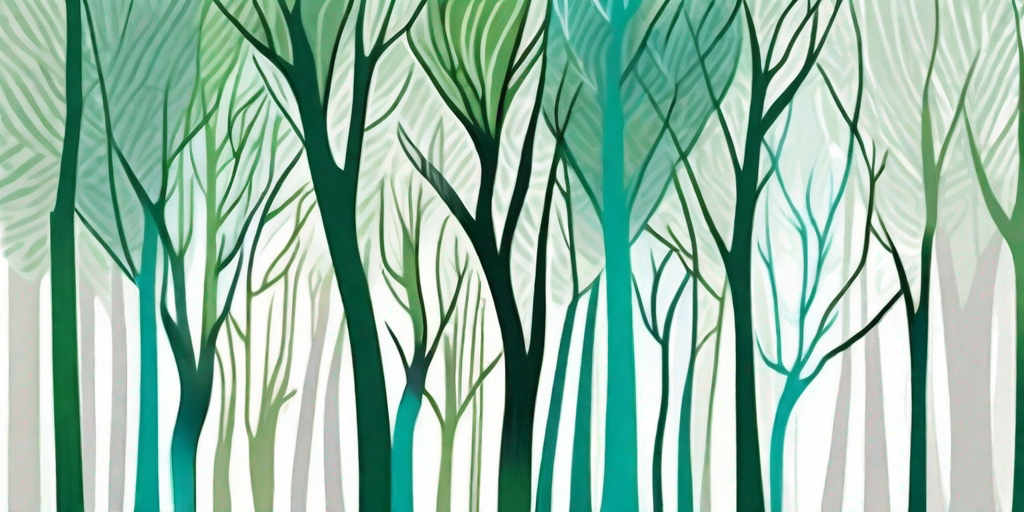
Welcome, tree enthusiasts and casual readers alike! Today, we're diving into the world of Sycamores, those shady characters that grace our landscapes with their stunning beauty. Buckle up, because we're about to embark on a journey of discovery that's as exciting as it is enlightening.
Understanding the Sycamore
Before we get to the fun stuff, let's lay down some groundwork. The Sycamore, or Platanus Occidentalis, is a deciduous tree native to North America. It's known for its distinctive, mottled bark, broad leaves, and ability to grow to impressive heights. But there's more to this tree than meets the eye.
Did you know that the Sycamore is one of the oldest species of trees on Earth? That's right, these guys have been around for a while, and they've got the wisdom to prove it. They're also incredibly resilient, able to withstand harsh conditions and even pollution. Talk about tough!
The Sycamore's Unique Appearance
One of the most striking features of the Sycamore is its bark. Unlike most trees, the Sycamore's bark peels away in patches, revealing a multi-colored canvas of white, tan, and brown. This gives the tree a somewhat 'shabby chic' look, like it's just rolled out of bed and yet still manages to look fabulous.
Then there are the leaves. Broad, lobed, and with a texture that's been described as 'rough', they provide ample shade during the summer months. And in the fall? They turn a stunning shade of gold, making the Sycamore the belle of the autumn ball.
The Sycamore's Role in the Ecosystem
But the Sycamore isn't just a pretty face. It plays a crucial role in its ecosystem, providing habitat and food for a variety of wildlife. Birds nest in its branches, insects munch on its leaves, and small mammals use its hollow trunks as shelter. It's like the tree version of a bustling city!
And let's not forget about its role in human history. The wood of the Sycamore has been used for everything from furniture to musical instruments, while its sap has been used in traditional medicine. Talk about a multi-talented tree!
Getting Up Close and Personal with Sycamores
Now that we've covered the basics, let's get to the good stuff. How can you experience the beauty of Sycamores for yourself? Here are some tips.
Firstly, go for a walk in a local park or forest. Chances are, you'll come across a Sycamore or two. Take the time to really look at the tree. Notice its bark, its leaves, its overall shape. You might even want to give it a hug (we won't judge).
Identifying Sycamores
But how can you be sure you're looking at a Sycamore? Here are some tell-tale signs:
- The bark: Remember, Sycamores have a unique, patchy bark that's unlike any other tree.
- The leaves: Look for broad, lobed leaves with a rough texture.
- The size: Sycamores are typically quite large, so if you're looking at a small tree, it's probably not a Sycamore.
Of course, there are exceptions to every rule, so if you're unsure, it's always a good idea to consult a tree identification guide or a local expert.
Photographing Sycamores
If you're a photography enthusiast, Sycamores make for great subjects. Their distinctive appearance can add interest to any landscape shot, while their intricate details can make for stunning close-ups. So next time you're out and about, why not bring your camera along and capture the beauty of Sycamores in all their glory?
Just remember to respect the tree and its surroundings. After all, we're guests in their home!
FAQs
How long do Sycamores live?
Sycamores can live for hundreds of years. In fact, some of the oldest Sycamores are believed to be over 500 years old. That's older than Shakespeare!
Can I plant a Sycamore in my backyard?
While it's certainly possible to plant a Sycamore in your backyard, keep in mind that these trees can grow to be quite large. So unless you have a lot of space, it might be best to stick to smaller species.
Are Sycamores evergreen?
No, Sycamores are deciduous, meaning they lose their leaves in the fall and grow new ones in the spring. But don't worry, they're just as beautiful in winter as they are in summer!
Conclusion
And there you have it, folks! A deep dive into the world of Sycamores. Whether you're a tree lover or just a curious reader, we hope you've learned something new and interesting about these shady and stunning beauties. So next time you see a Sycamore, take a moment to appreciate its unique beauty and the important role it plays in our world. Happy tree spotting!















